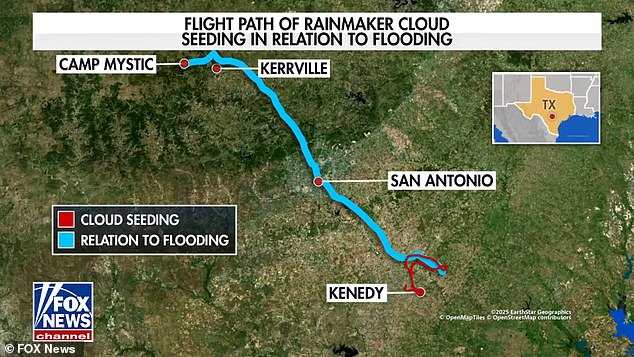
Rainmaker CEO Addresses Weather Modification’s Role in Catastrophic Texas Flooding
Texas Floods Spark Debate Over Cloud-Seeding Blame
(Images: 1) Flooded Texas landscape; 2) CEO Augustus Doricko; 3) Cloud-seeding plane in action; 4) Rescue teams searching debris)
A Texas-based weather modification company, Rainmaker, faces public backlash after speculation linked its cloud-seeding operations to catastrophic July 4 floods that killed 120 people, including 27 girls at a summer camp. The floods, triggered by a tropical storm, devastated Central Texas, with Kerr County hardest hit.
Two days prior, Rainmaker conducted a cloud-seeding mission 130 miles southeast of Kerr County. Critics on social media questioned whether the operation exacerbated the disaster. CEO Augustus Doricko denied the claims, stating the company halted activities a day before the National Weather Service’s flood warning. “Cloud-seeding generates tiny precipitation amounts compared to natural storms,” he emphasized, noting the floods unleashed trillions of gallons of water versus cloud-seeding’s “millions.”
Texas regulators and scientists agree. A Texas Department of Licensing and Regulation (TDLR) spokesperson confirmed the targeted clouds had “dissipated by July 2,” and cloud-seeding, at best, increases rainfall by 10%. “It cannot produce violent storms,” the spokesperson added. Atmospheric scientist Ken Leppert stressed cloud-seeding only enhances existing clouds, not creates storms.
Despite evidence, public skepticism surged. Social media posts accused Rainmaker of “playing God,” while Sen. Ted Cruz dismissed the theories as “crazy.” Doricko acknowledged receiving threats but noted weather modification often faces blame during disasters.
Why Texas Is Vulnerable
The Texas Hill Country’s geography—dry, compact soil and rapid drainage—makes it prone to flash floods. Climate scientists warn warming temperatures intensify rainfall, heightening risks in regions like the southern U.S. The Guadalupe River, swollen by 12 inches of rain in hours, reached a 93-year high, overwhelming infrastructure.
Cloud-Seeding Explained
(Image: Scientist releasing silver iodide flares)
The decades-old technique disperses aerosols like silver iodide into clouds to stimulate precipitation. Used in drought-prone areas, its effects are localized and short-lived. “Aerosols dissipate within hours,” Doricko said, calling remnants from their operation “background dust.”
Aftermath and Ongoing Risks
(Image: Flooded neighborhood in Ingram, Texas)
Rescue teams continues searching for survivors as experts warn states like Florida, New York, and New Jersey face similar flash flood threats. With climate models predicting heavier rainfall, the tragedy underscores the need for improved infrastructure and emergency preparedness.
While grief fuels scrutiny, officials urge focusing on verifiable causes. As Doricko stated, “This was a natural disaster—cloud-seeding isn’t a villain.”
Word count: 598


